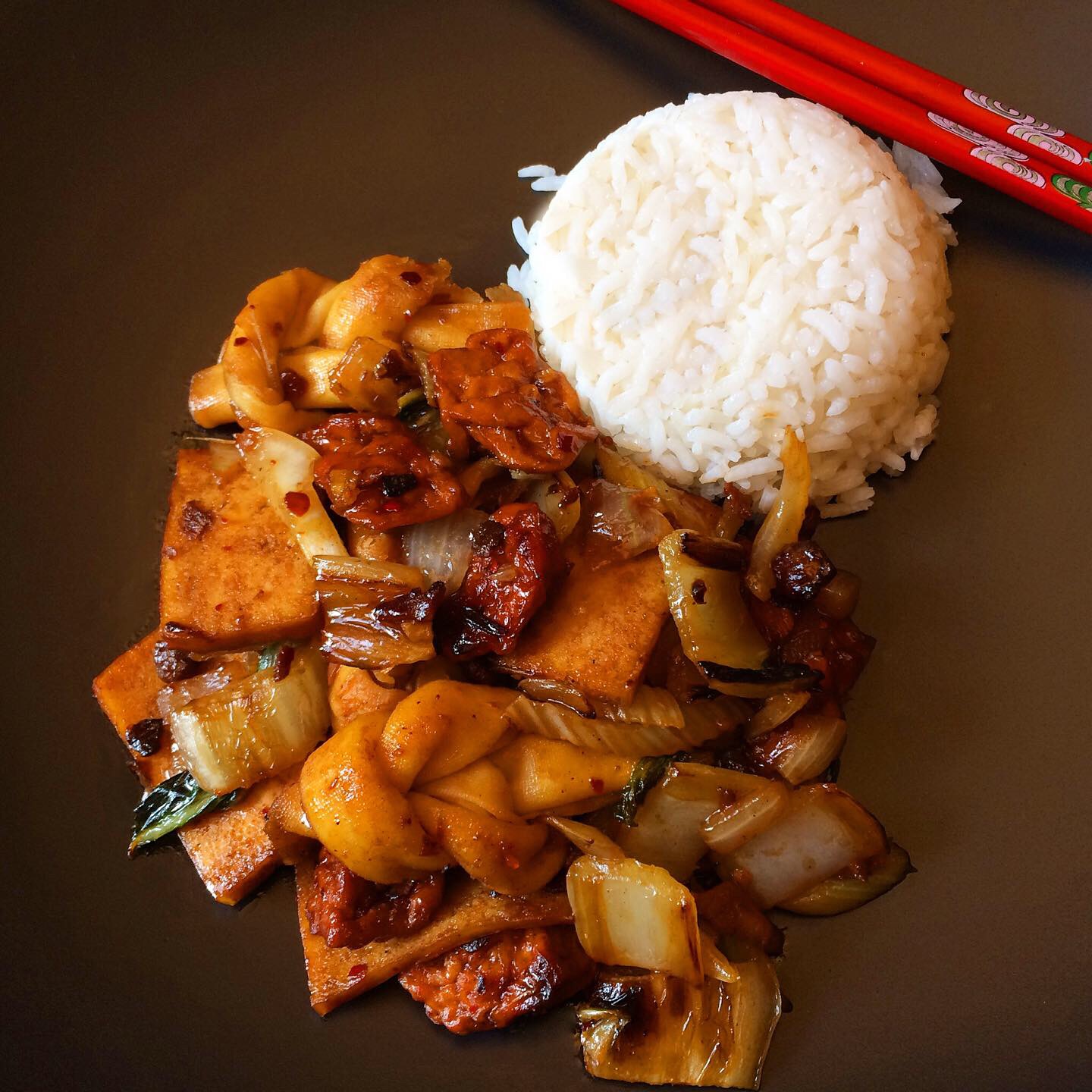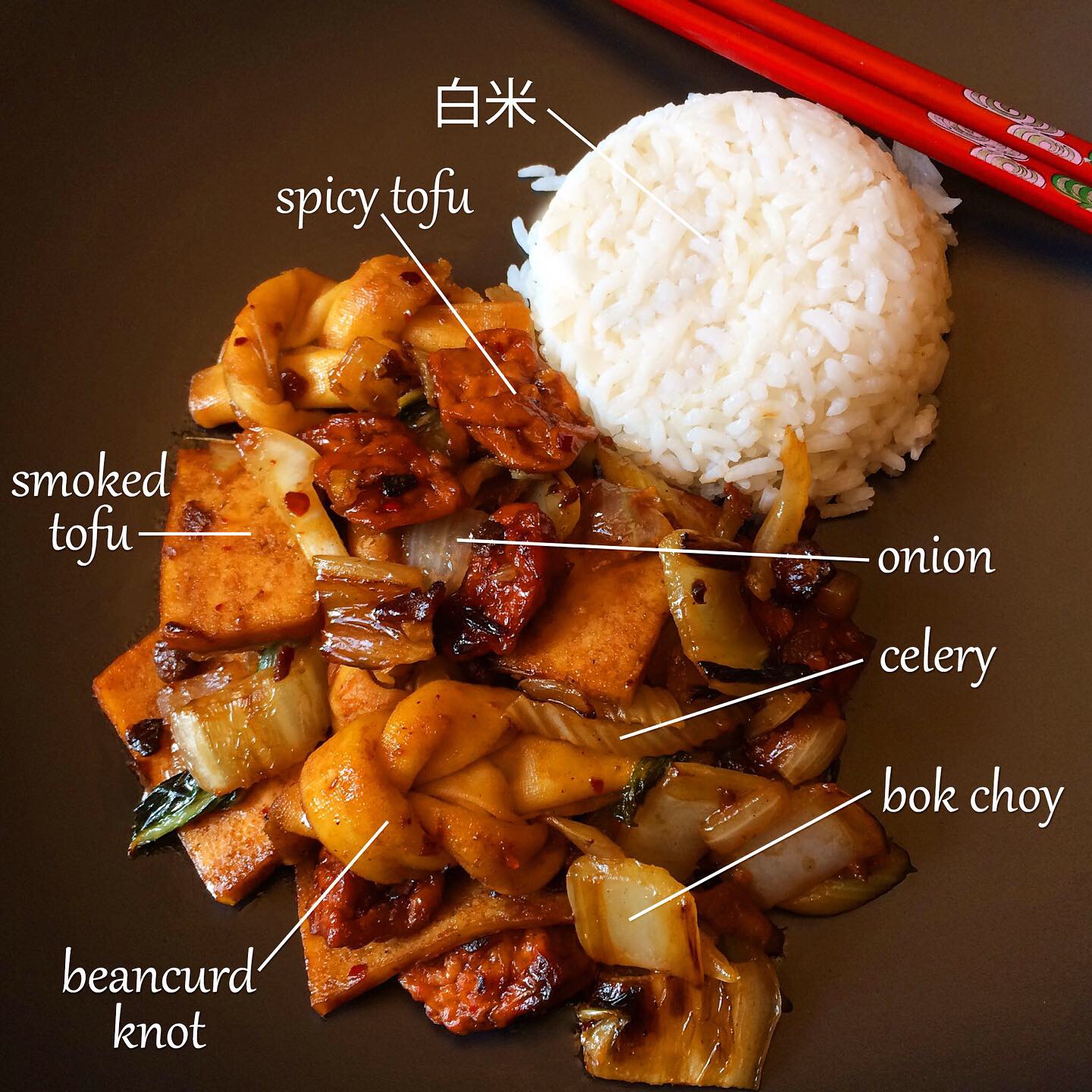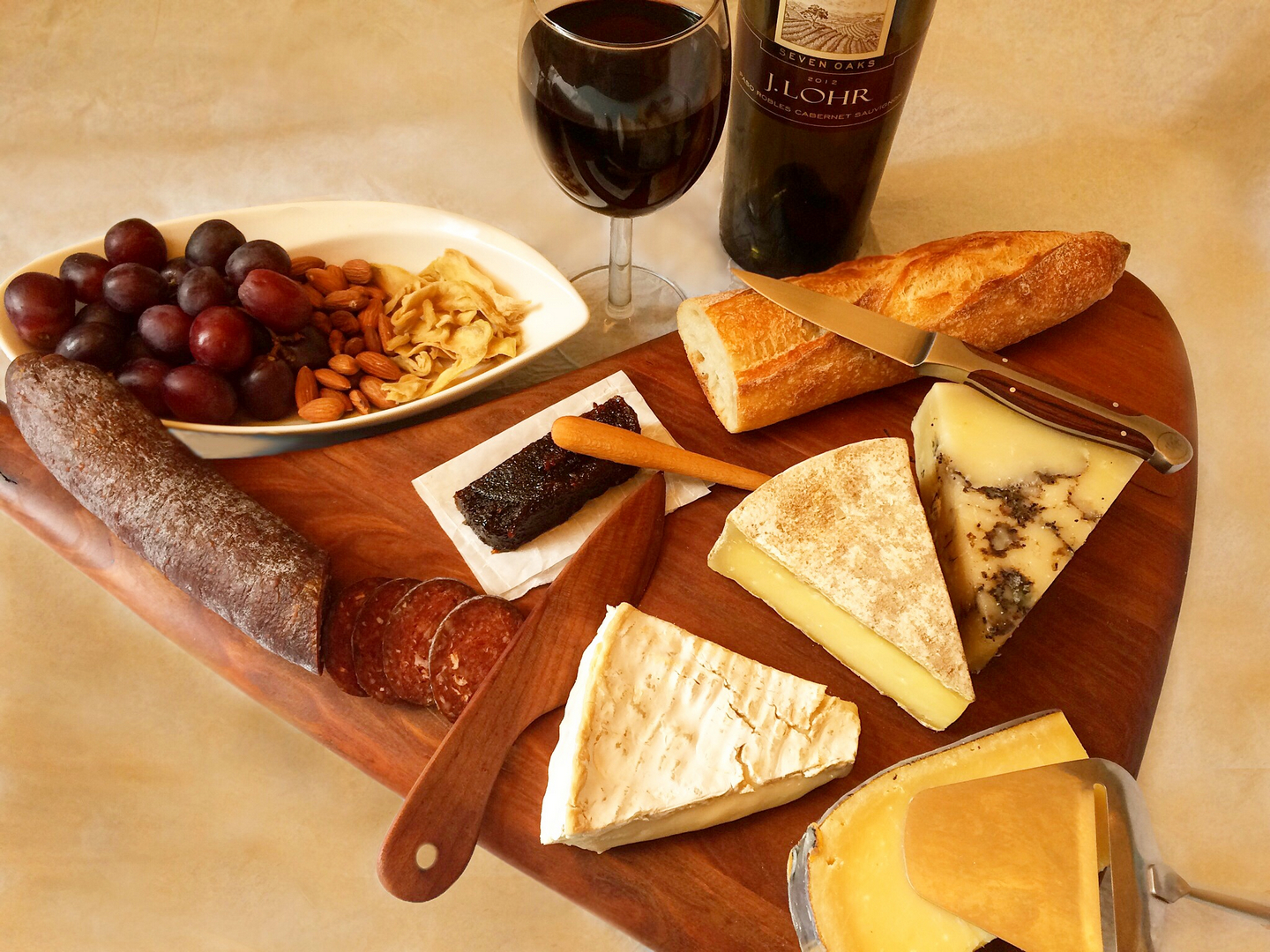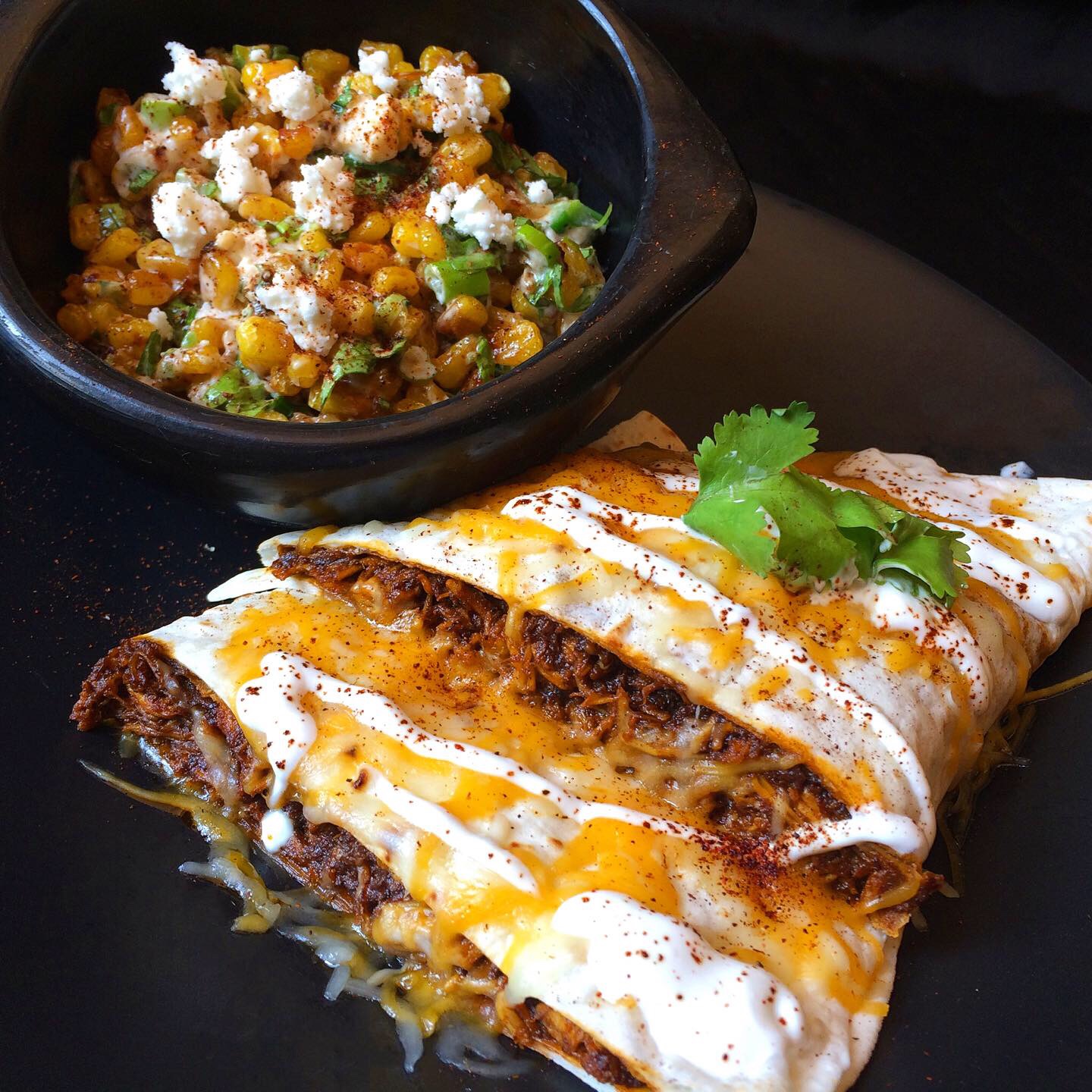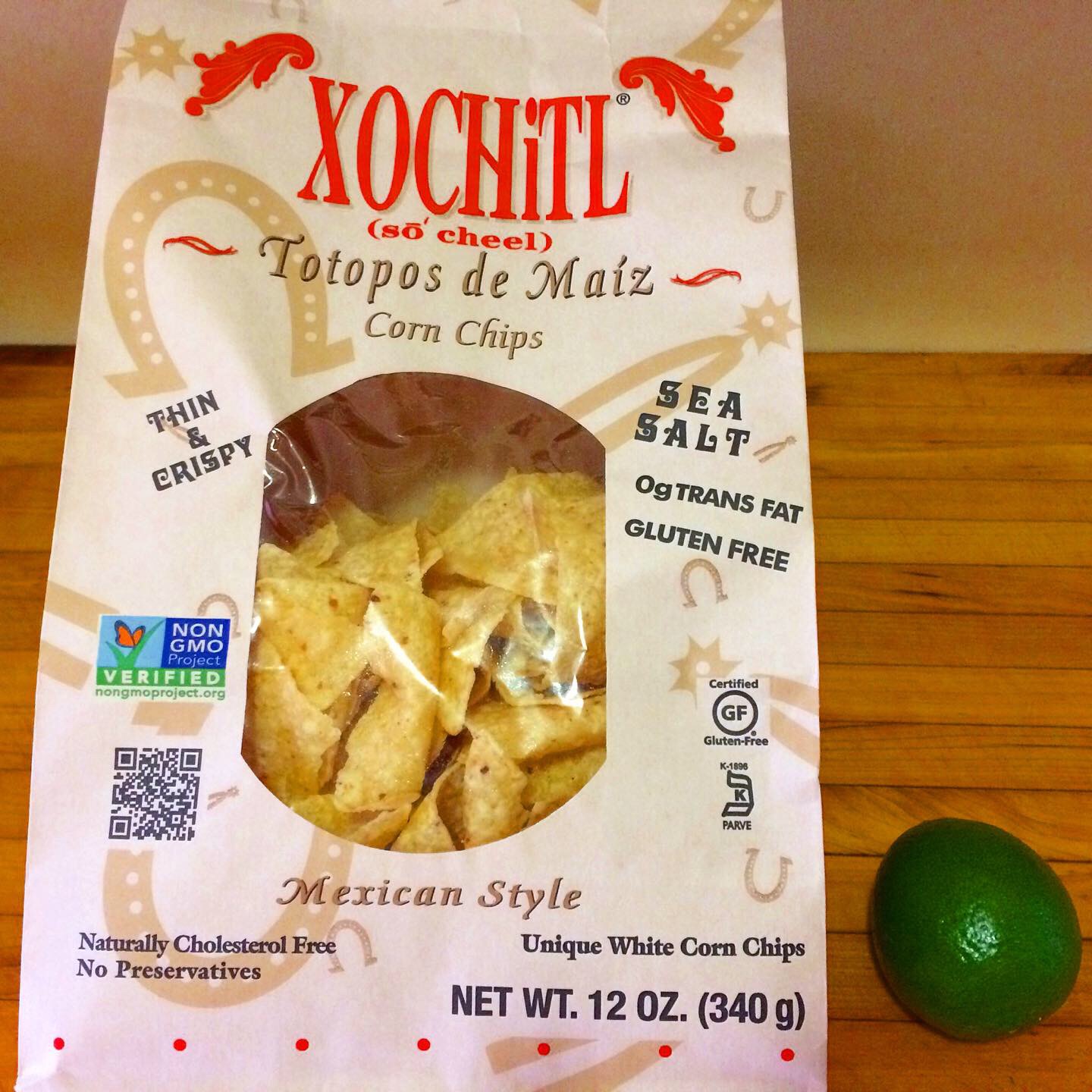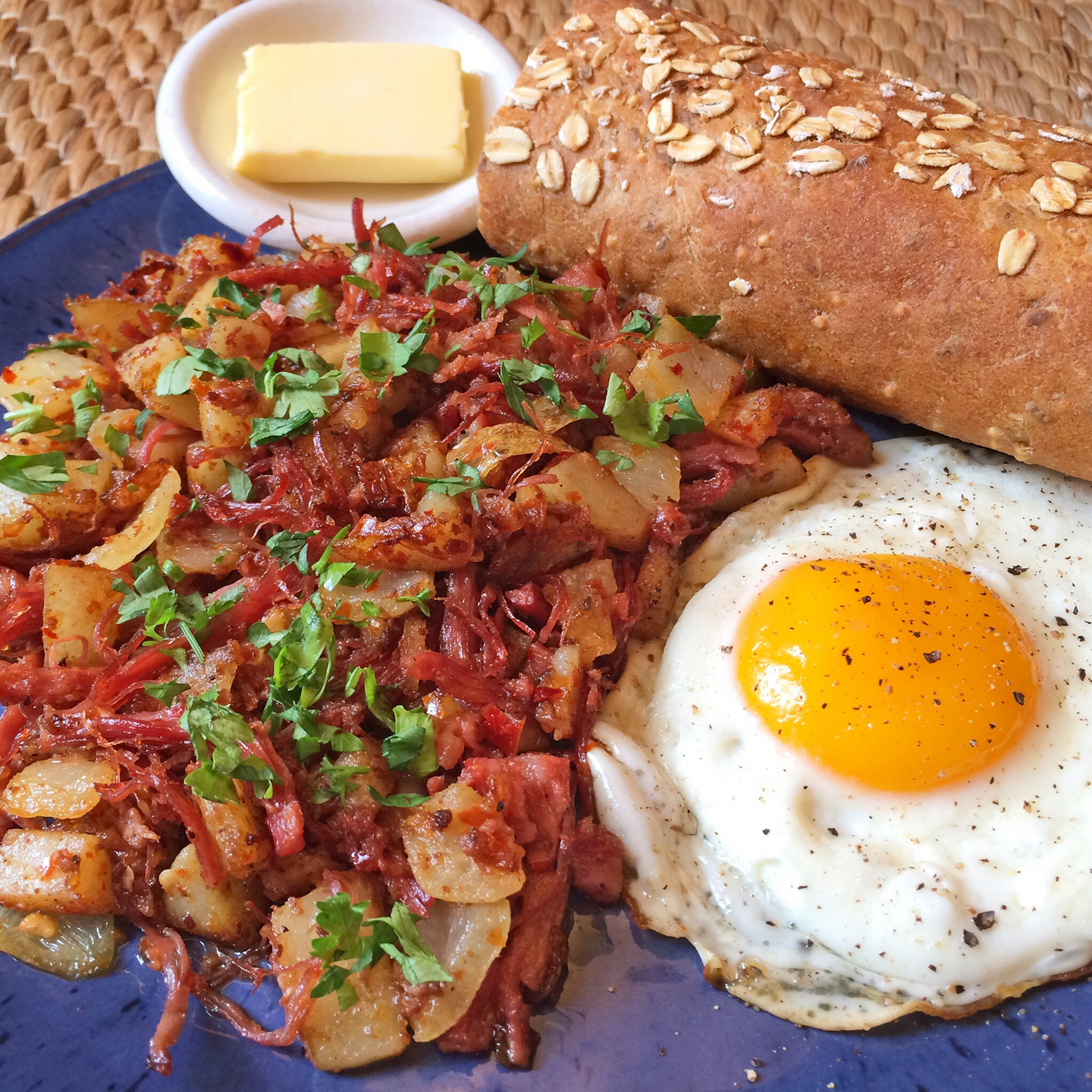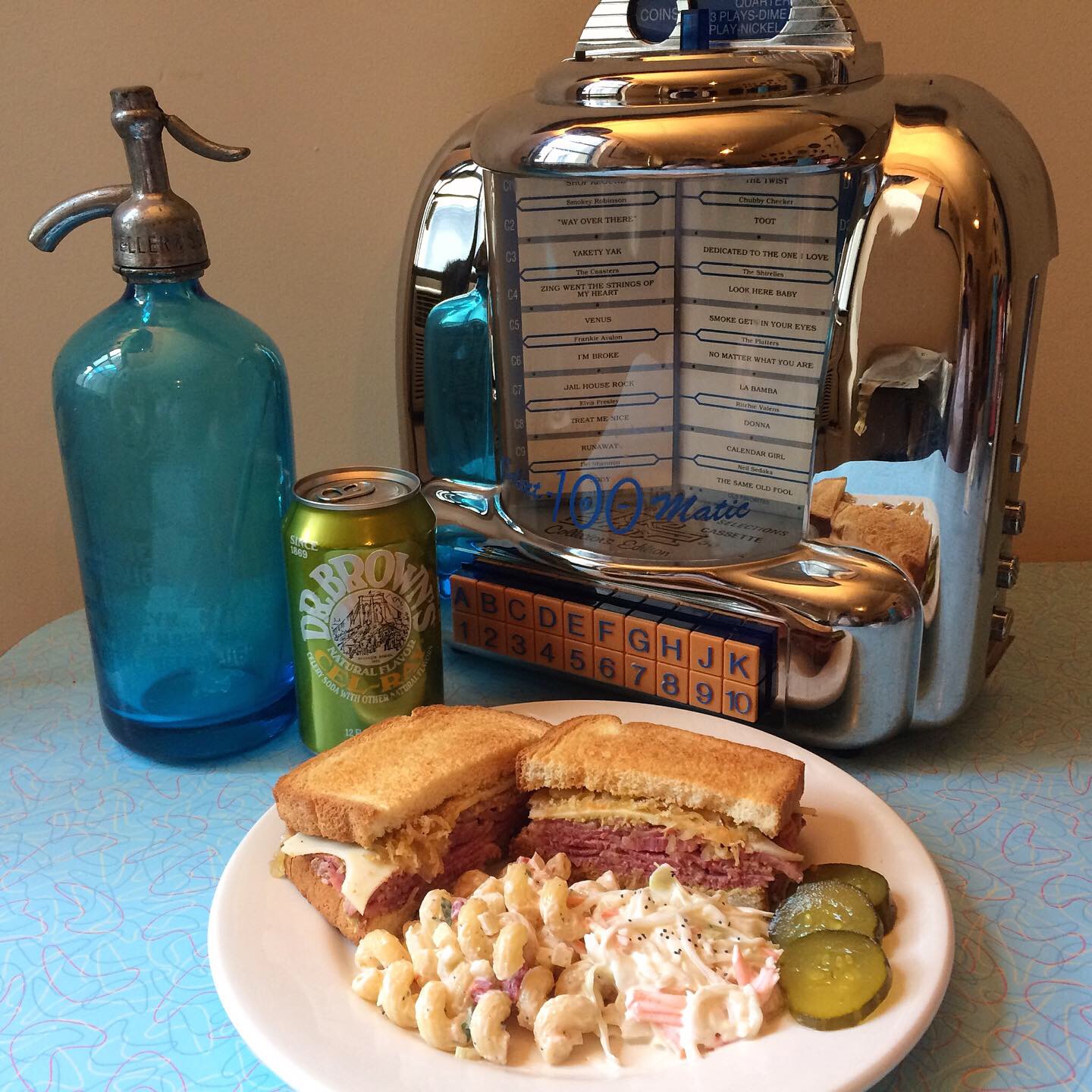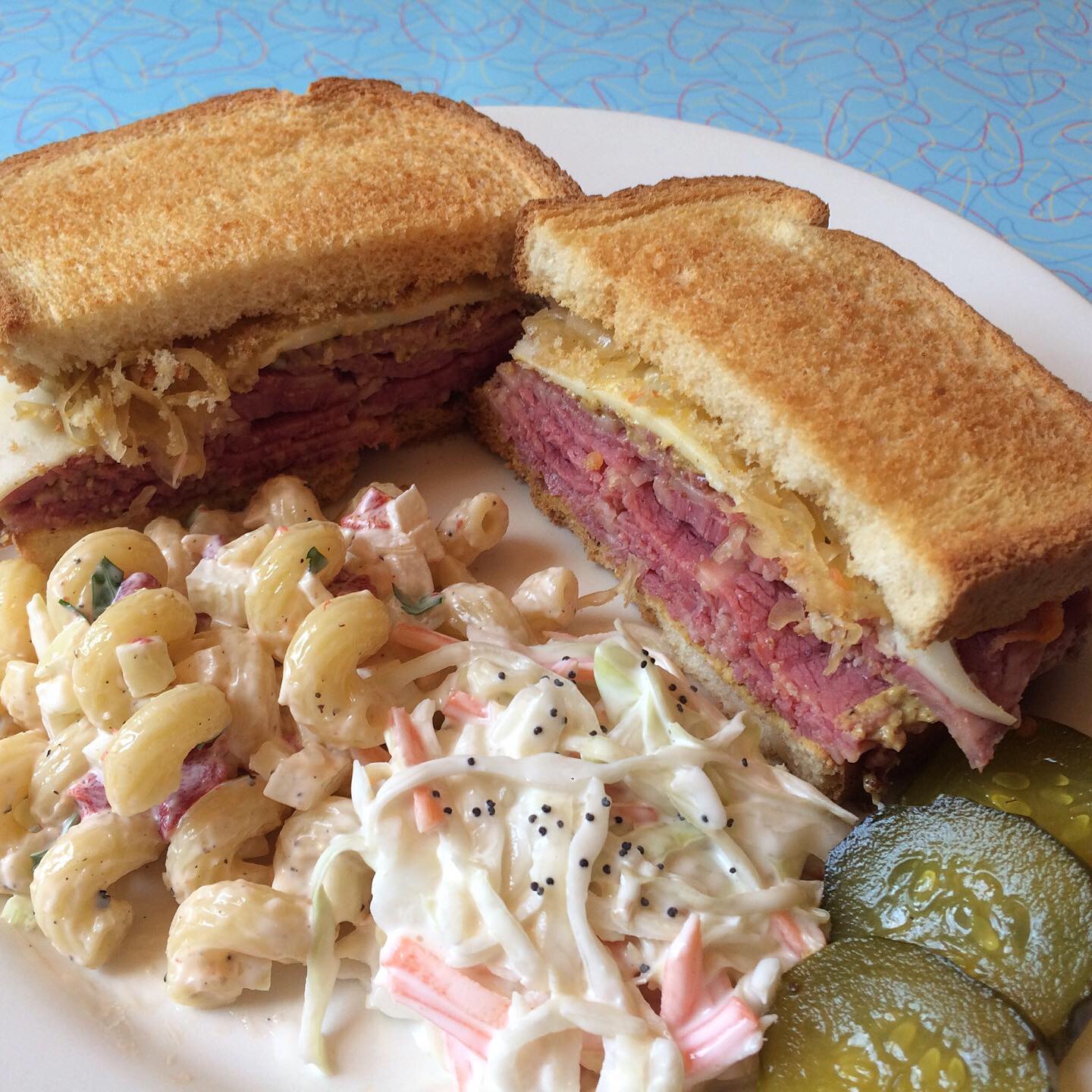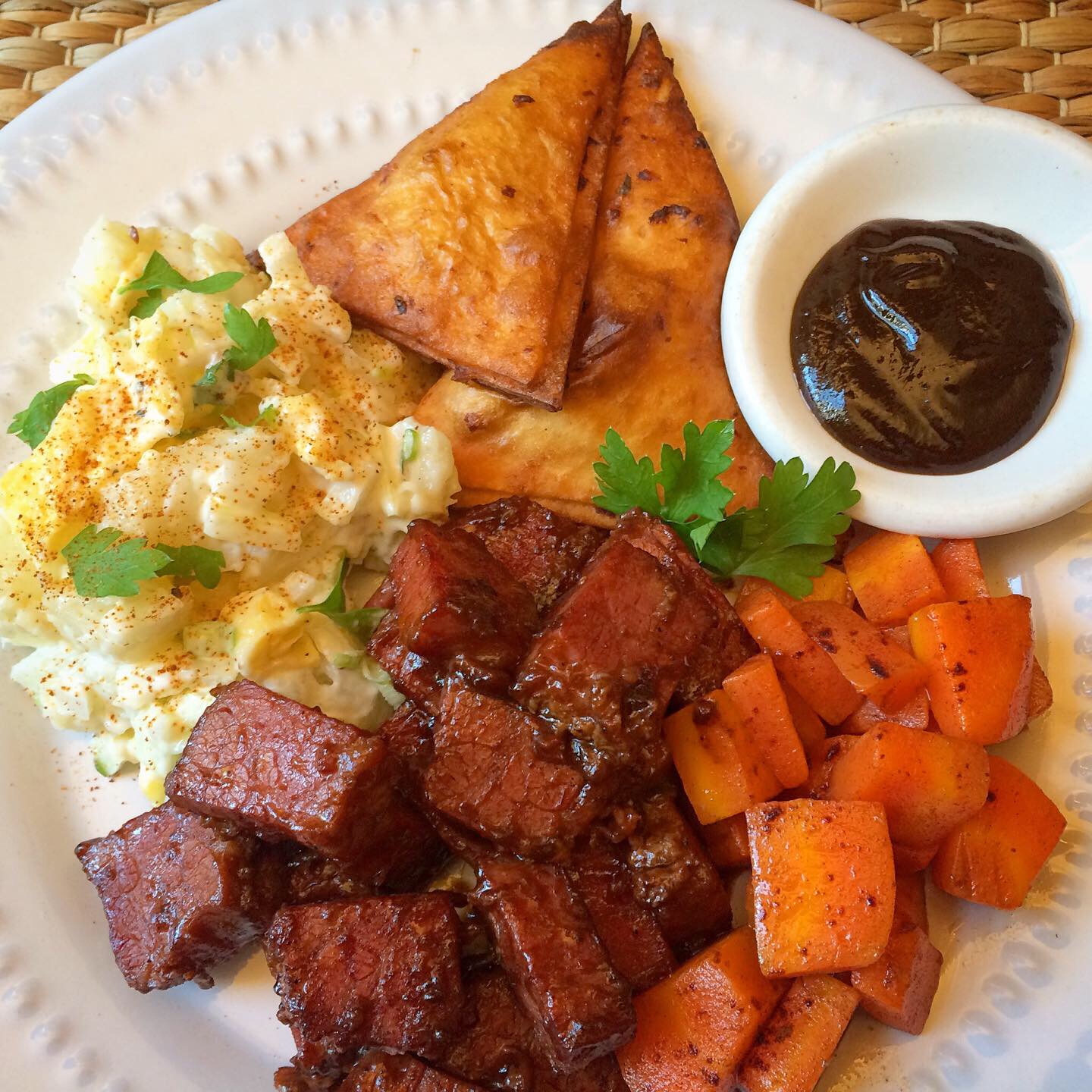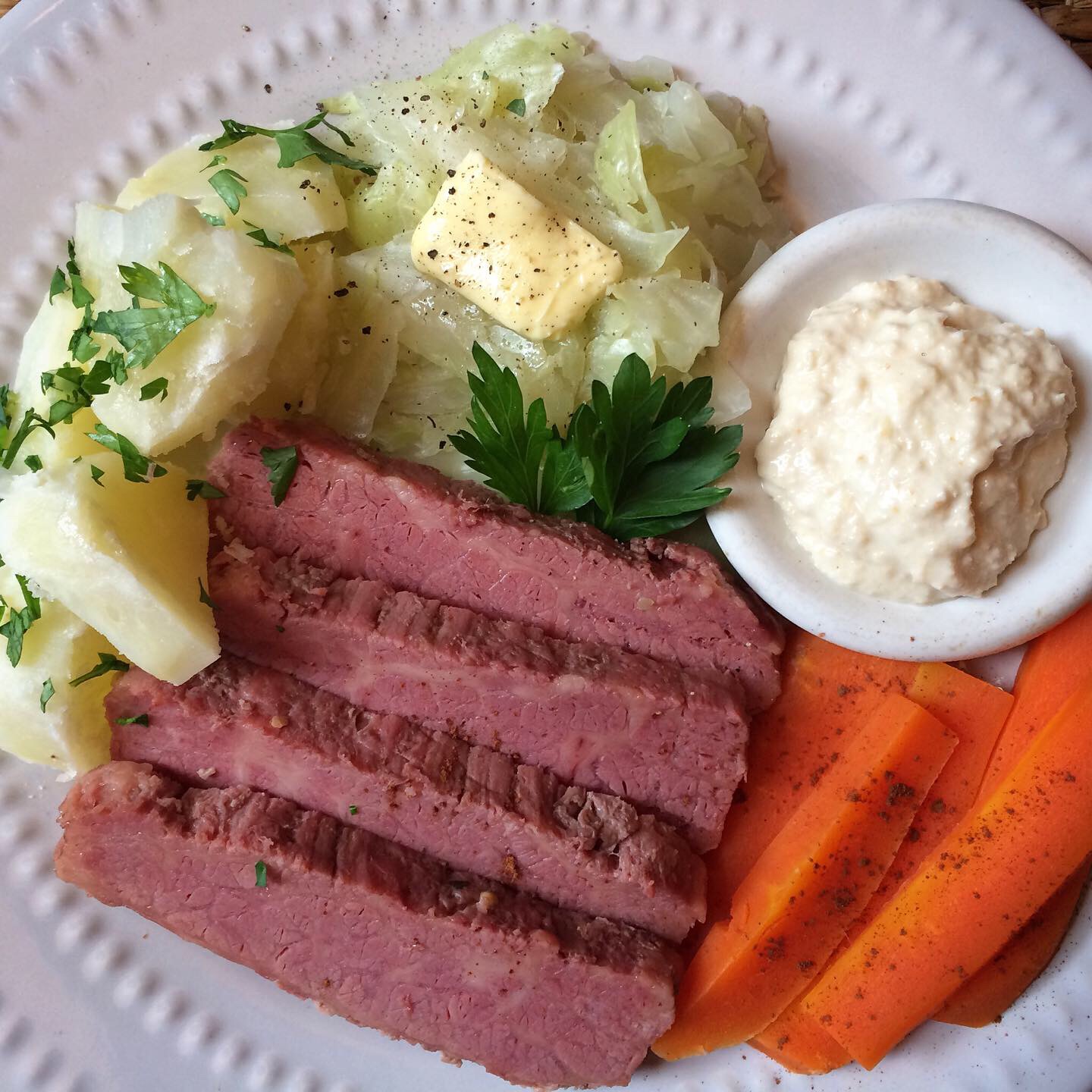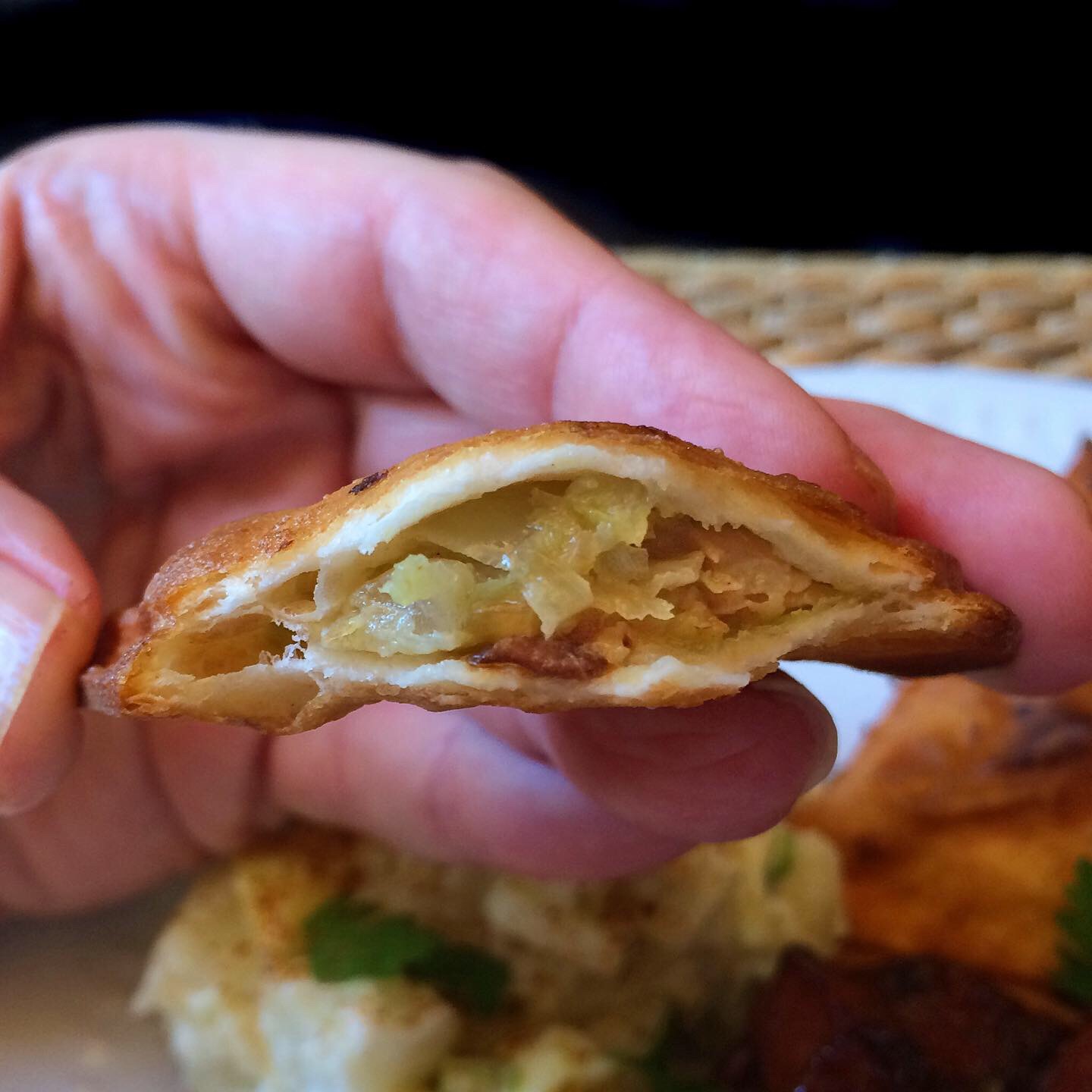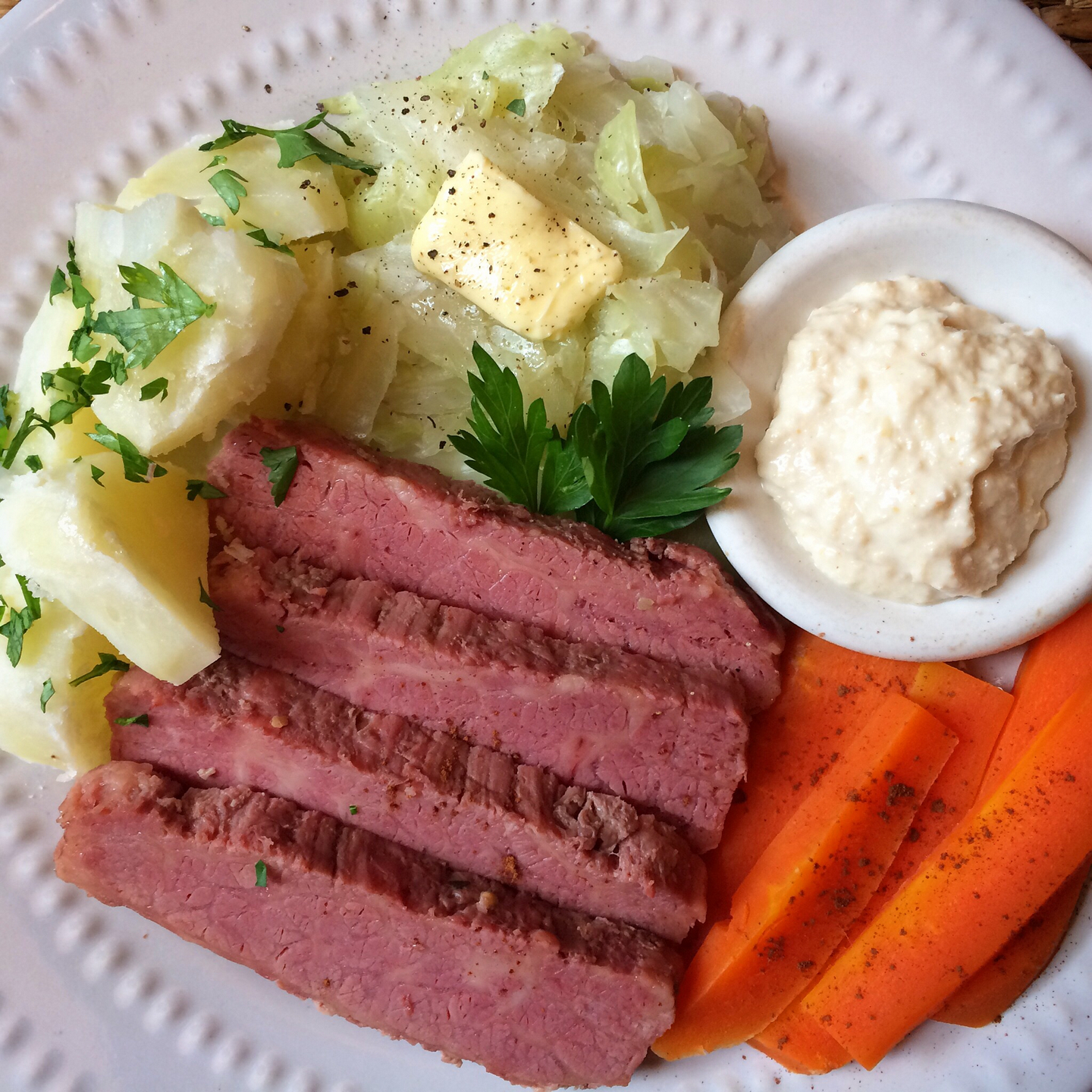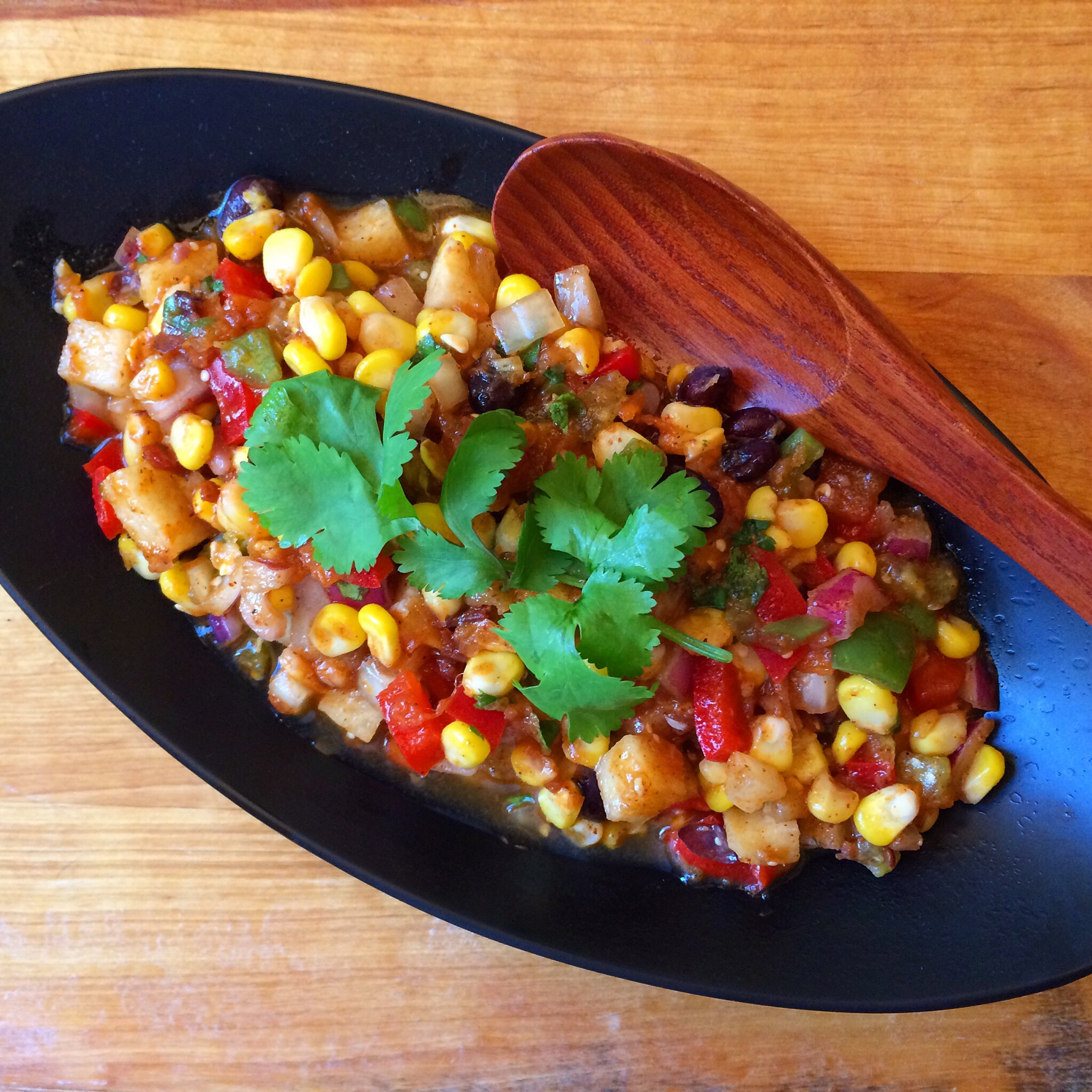Instagram Post 5/9/2020
👨🍳 Cooking in the Time of COVID 👨🍳
(Click on any image to view it in high resolution.)

When I was researching adding a Greenpoint, Brooklyn ethnojunket to my repertoire of neighborhood food tours, I bought too many (of course) Eastern European sausages in order to evaluate which would be best (as Melania would have it). There are still a dozen or so in the freezer. Sounds to me like another use-whatever-I-have-on-hand-without-venturing-out-to-buy-more-stuff challenge.
So we’ll start with the most obvious substitution, a sammich endemic to NYC affectionately called Sausage & Peppiz. This one was easy. I already had onions and peppers on hand so I fried them up with some swojska kielbasa adding my not so secret ingredient, fennel seed, which makes everything it comes into contact with taste like Italian sausage. A hit of Parmigiano-Reggiano and bada bing bada boom, Sausage & Peppiz! Mangia!
(All I needed was “the wine with the peaches” as they say at the San Gennaro Festival! 😉)
Stay safe, be well, and eat whatever it takes. ❤️

